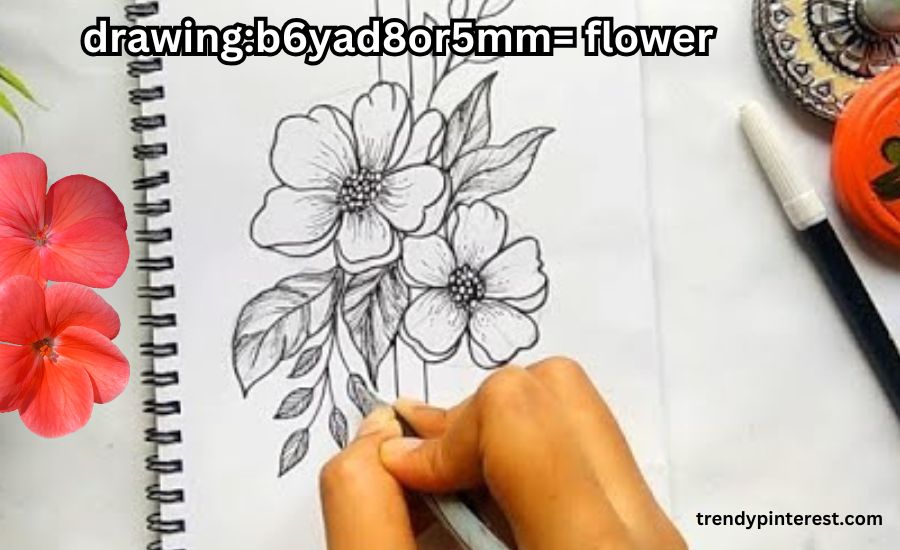Drawing:b6yad8or5mm= flower can be an amazing way to express your creativity. Whether you’re new to drawing or have a little experience, flowers are a great subject to start with. They come in so many shapes, sizes, and colors that they make every drawing unique. In this post, we’ll show you how to get started with drawing:b6yad8or5mm= flower and help you create beautiful artwork.
If you’ve ever wondered how to draw a flower, you’re not alone. Flowers might seem tricky at first, but with the right approach, anyone can do it. From simple daisies to complicated roses, drawing:b6yad8or5mm= flower doesn’t have to be hard. Let’s dive in and learn how to turn your drawings into colorful, lifelike creations that capture the beauty of nature.
What is Drawing:b6yad8or5mm= Flower and Why is it Fun?
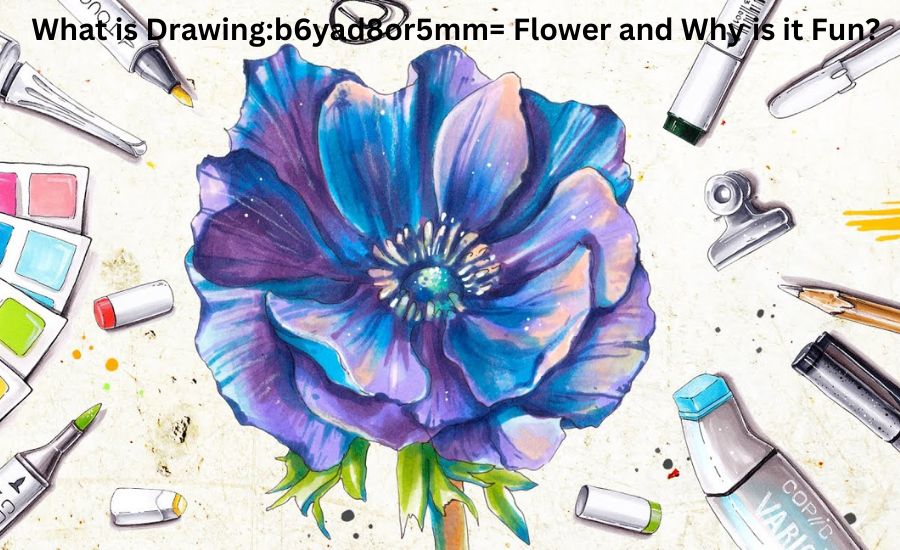
Drawing:b6yad8or5mm= flower is a great way to practice your artistic skills while having fun. Flowers come in all shapes and colors, which makes them an exciting subject for any artist. Whether you like simple daisies or colorful roses, drawing flowers is an enjoyable experience. The best part is, you don’t need to be a professional artist to start.
When you draw a flower, you get to observe its details, like the way the petals curve or how the colors blend together. It’s a creative process that lets you connect with nature in a different way. It’s fun to draw because you can experiment with shapes, colors, and styles. Plus, flowers are everywhere, making them easy to find inspiration from.
By practicing drawing:b6yad8or5mm= flower, you can improve your observation skills and fine-tune your hand-eye coordination. Whether you use pencils, watercolors, or colored pencils, the possibilities are endless. Drawing flowers is a simple yet rewarding activity that brings out your creative side.
Step-by-Step Guide to Drawing:b6yad8or5mm= Flower: A Beginner’s Journey
If you’re new to drawing:b6yad8or5mm= flower, don’t worry. It’s easier than you think. For example, you can draw a circle in the middle for the flower’s center and ovals or teardrop shapes for the petals. These shapes will give you the foundation you need to build your drawing.
Next, focus on the details. Start adding lines to show how the petals fold. You can also draw the leaves and stem. As you continue, add more curves to make the flower look more natural. It’s important to keep practicing and not rush through the details.
Shading is the next step to add depth. Lightly shade areas where the flower curves or where the light doesn’t reach. This will give your drawing a more 3D effect. The more you practice each step, the better your flower drawings will become. Remember, practice is key to improving.
Essential Tools You Need for Drawing:b6yad8or5mm= Flower
When you begin your drawing:b6yad8or5mm= flower journey, you’ll need a few basic tools to get started. A good set of pencils is important. Pencils come in different hardness levels, and you should use softer pencils, like 2B or 4B, for shading. These pencils help you create smooth, dark areas on your flower drawing.
You’ll also need a good eraser. An eraser helps you clean up any mistakes and can even be used to lighten areas of your drawing. This is especially helpful when you want to create highlights on the petals or leaves. A sharpener is important to keep your pencils sharp for fine details.
Finally, choose the right paper. Smooth paper is best for detailed drawings, while textured paper can add extra depth and character to your artwork. With the right tools, you can make your drawing:b6yad8or5mm= flower come to life.
The Anatomy of a Flower: Understanding What to Draw
Understanding the anatomy of a flower is essential for making your drawing:b6yad8or5mm= flower realistic. A flower typically has several key parts: the petals, the stem, the leaves, and the center. The petals are the most noticeable part, and they come in various shapes and sizes. Some petals are smooth, while others are jagged or curved.
The center of the flower is where all the magic happens. For example, in a sunflower, the center is filled with tiny seeds that form intricate patterns. Pay attention to these details as they will make your drawing look more lifelike.
Don’t forget the leaves and stem. Leaves can be long, short, jagged, or smooth. They often have veins that you can draw for extra texture. The stem is the support of the flower and can vary in thickness depending on the type of flower you’re drawing.
How to Draw the Perfect Petal in Your Drawing:b6yad8or5mm= Flower
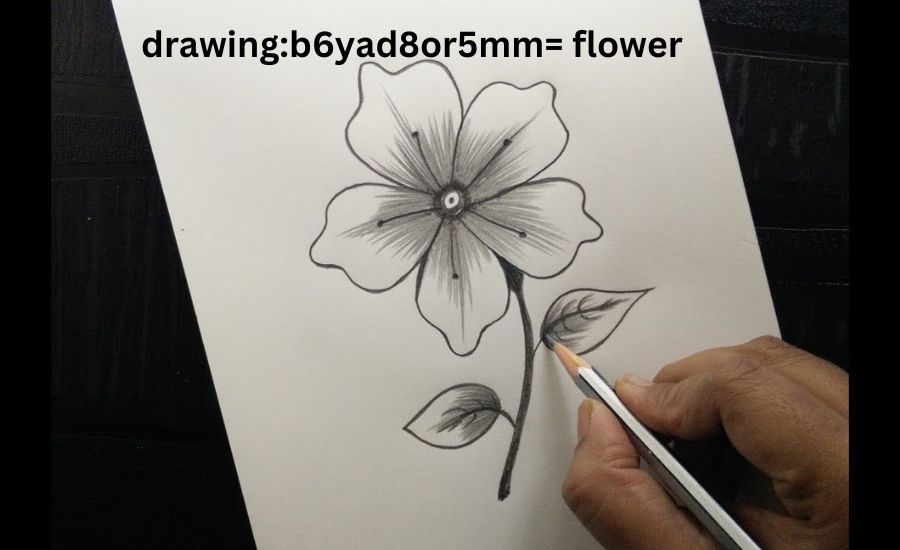
Drawing petals is a key part of drawing:b6yad8or5mm= flower that can make or break your artwork. Start by sketching the shape of the petal. Most petals are oval or teardrop-shaped, but each flower has unique petal shapes. For example, a lily’s petals are more elongated and pointed, while a rose’s petals are rounded and curled.
To create a realistic petal, think about how it bends and curves. Petals are not flat; they have depth. Add some light shading along the edges or under the folds to make the petals look three-dimensional. Use soft strokes to create smooth transitions between light and dark areas.
Pay attention to the petal’s texture. Some flowers have smooth petals, while others might be velvety or waxy. By studying the flower closely, you can add these small details to make your drawing stand out.
Shading and Textures: Adding Realism to Your Drawing:b6yad8or5mm= Flower
Shading is what brings your drawing:b6yad8or5mm= flower to life. Without shading, your flower will look flat and unfinished. Start by observing the light source. Where does the light hit the flower? The areas facing the light will be lighter, while the parts turned away from the light will be darker.
Use light pencil strokes to create soft shadows. Gradually build up the shading to make areas darker. A blending stump or tissue can help you smooth out the shading, creating a more natural look. Pay attention to small details like the veins in the petals or the texture of the leaves.
Adding texture is also important in flower drawing. Each part of the flower has its own unique feel. For example, the petals may be soft and smooth, while the center of the flower may have a bumpy texture. By adding these small textures, you make your drawing:b6yad8or5mm= flower more realistic.
Common Mistakes When Drawing:b6yad8or5mm= Flower and How to Avoid Them
When drawing:b6yad8or5mm= flower, there are a few common mistakes that beginners often make. One of the biggest mistakes is drawing flowers out of proportion. For example, the petals might be too big or the stem too short. To avoid this, always use light guidelines and compare different parts of your flower as you draw.
Another mistake is overloading your drawing with too many details too soon. It’s tempting to add all the little veins or tiny textures, but it’s better to focus on the basic shapes first. Once you have a strong foundation, you can add the details without overwhelming the drawing.
Lastly, many beginners forget to pay attention to the light source. Without proper shading, the flower may look flat. Make sure you add shading in the correct areas to give your flower depth and dimension.
How to Draw Different Types of Flowers: Roses, Tulips, and More.
Every flower has its own unique shape, so it’s important to understand how to draw different types of flowers. Drawing:b6yad8or5mm= flower can be a fun challenge as you tackle different species. Let’s start with roses. Roses have overlapping petals that curve and fold in layers. Begin by drawing the center and work your way out, adding layers as you go.
Tulips, on the other hand, have smooth, rounded petals that create a gentle curve. They are much simpler to draw than roses but still offer lots of opportunities to practice shading. Sunflowers are another fun flower to draw. They have a large center filled with seeds and long, bright petals surrounding it.
By drawing different types of flowers, you will improve your skills and learn new techniques. Each flower offers a unique challenge, making drawing:b6yad8or5mm= flower even more exciting.
Drawing:b6yad8or5mm= Flower in Different Styles: Realistic vs. Abstract
When you begin drawing:b6yad8or5mm= flower, you can choose different styles to express your creativity. A realistic style focuses on capturing the flower exactly as it appears in nature, paying attention to every petal, leaf, and detail. This style requires careful observation and accurate shading to make the flower look three-dimensional.
On the other hand, an abstract style lets you take more creative liberties with the shapes and colors. You might exaggerate the petals or use bright, unexpected colors that don’t exist in real life. Experimenting with different styles allows you to discover your personal artistic expression.
Both styles are valid, and practicing both will help you improve as an artist. Whether you prefer to draw a realistic drawing:b6yad8or5mm= flower or something more abstract, the important thing is to have fun and let your creativity flow.
Using Colored Pencils and Watercolors to Add Color to Your Drawing:b6yad8or5mm= Flower
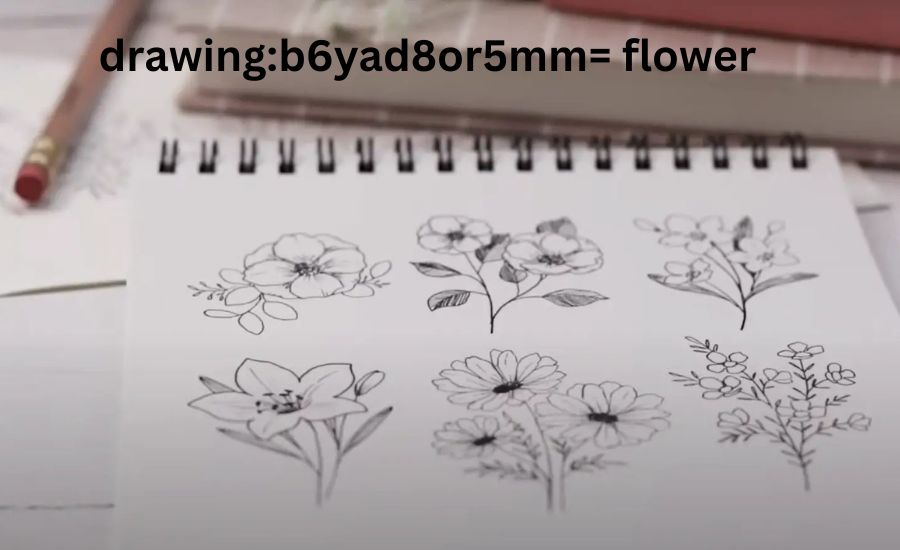
Once you’ve mastered the basics of drawing:b6yad8or5mm= flower, it’s time to add color. Colored pencils and watercolors are two great options for coloring your flowers, but each offers different effects.
Colored pencils are great for controlled coloring. They allow you to add fine details, layer colors, and even blend shades. If you’re drawing a delicate flower like a lily or a rose, colored pencils will help you achieve smooth transitions between colors.
Watercolors, on the other hand, provide a more fluid and vibrant effect. They allow you to create soft washes of color, which can be perfect for flowers with lighter or translucent petals. Try experimenting with both mediums to see which one fits your style best.
Things You Have To Know: Cuteavcuk1fbj54-turtle
How to Capture the Perfect Flower from Nature: Observation Tips for Drawing:b6yad8or5mm= Flower
One of the best ways to improve your drawing:b6yad8or5mm= flower skills is by drawing from real-life flowers. Observing flowers in nature will give you a better understanding of their shapes, colors, and textures. To start, pick a flower that you find interesting, whether it’s from your garden, a park, or a florist.
Pay attention to the small details. How do the petals overlap? What shapes do the leaves make? How does the flower stand in relation to its stem? These details will help you recreate the flower more accurately on paper.
Also, don’t rush. Take your time to closely examine the flower and break it down into simpler shapes. This practice will not only make your drawing:b6yad8or5mm= flower more realistic but also improve your overall observation skills.
Perfecting the Stem and Leaves in Your Drawing:b6yad8or5mm= Flower
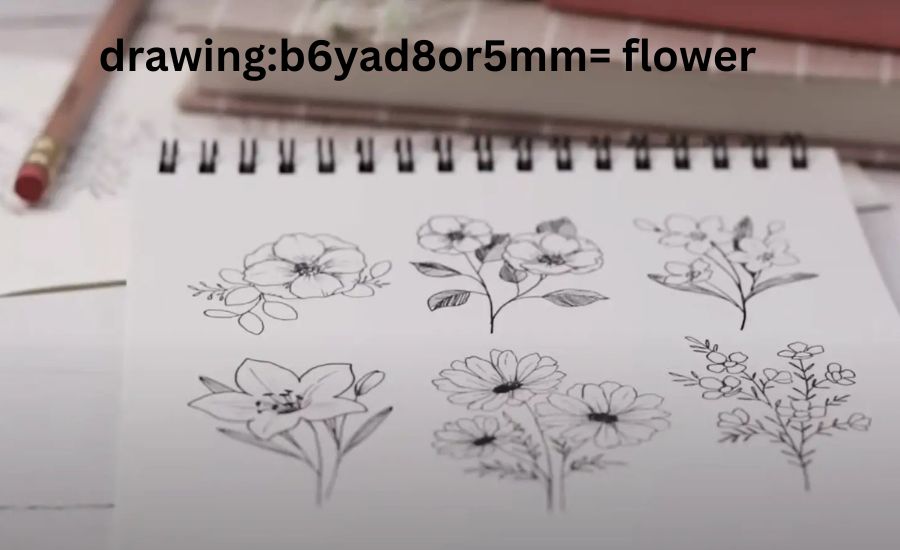
The stem and leaves are just as important as the petals in a drawing:b6yad8or5mm= flower. These elements provide structure and support, making your flower drawing look more balanced and realistic. Start by drawing the stem with light lines, gradually adding more details as you go. Pay attention to its thickness, texture, and direction as it grows.
Leaves can vary greatly in shape, so it’s important to study their form. Some flowers have long, narrow leaves, while others have round or jagged edges. Drawing leaves requires observing the veins and texture. Add small lines to represent the veins and give the leaves depth.
By focusing on these small but important details, your drawing:b6yad8or5mm= flower will have a more complete and polished look.
Adding Realistic Shadows to Your Flower Drawing:b6yad8or5mm= Flower
Shadows are what make a drawing:b6yad8or5mm= flower look realistic. Without them, the flower can appear flat. To add realistic shadows, first decide where the light is coming from. If the light is coming from the top, for example, the shadows will fall on the bottom of the petals, leaves, and stem.
Start by lightly shading the areas that are away from the light source. Use a pencil that’s softer (like 4B or 6B) to create darker shadows. Blend the shading using a blending stump or tissue to make the transitions smooth.
Don’t forget to add shadows around the base of the flower and under the petals to create depth. By practicing shadows, you will make your drawing:b6yad8or5mm= flower look three-dimensional and lifelike.
Experimenting with Different Flower Varieties for Drawing:b6yad8or5mm= Flower
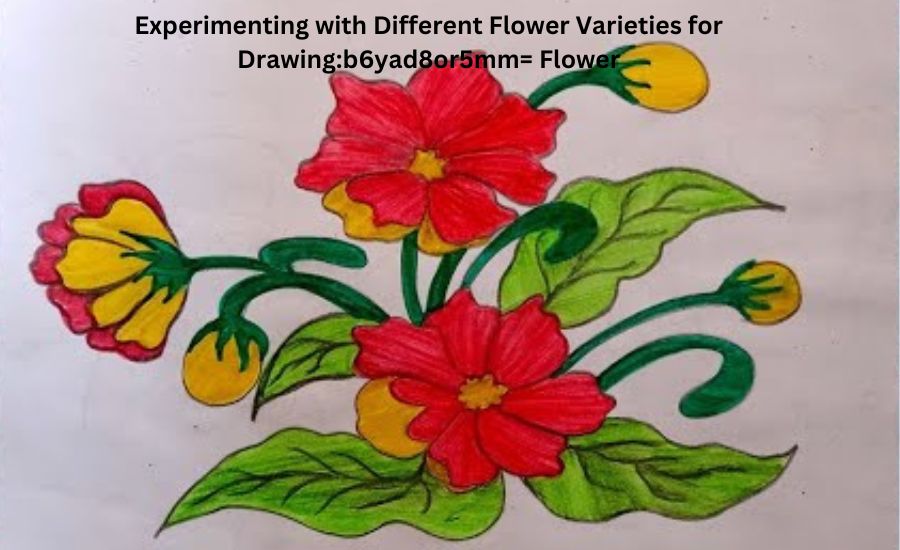
One of the best ways to improve your drawing:b6yad8or5mm= flower skills is to experiment with different types of flowers. Each flower has its own unique structure and appearance, which can challenge you to learn new techniques.
Try drawing flowers like tulips, roses, daisies, and lilies. Each of these flowers requires a different approach. For example, tulips have smooth, flowing petals, while roses have many layers of petals. Experimenting with various flower types will help you improve your drawing skills and develop your style.
You can also try drawing more unusual flowers like orchids or sunflowers. These flowers often have unique textures and details that will push you to observe and sketch them more closely. Don’t be afraid to challenge yourself and draw flowers that seem difficult at first.
The Joy and Therapeutic Benefits of Drawing:b6yad8or5mm= Flower
Drawing:b6yad8or5mm= flower can be more than just an artistic hobby – it can also be a therapeutic activity. Drawing flowers allows you to focus your attention on something beautiful and calming. It’s a wonderful way to relax, reduce stress, and improve your mental health.
When you draw a flower, you enter a state of mindfulness. This means you’re fully focused on the task at hand, which can help you forget about worries or problems. The process of sketching each petal and leaf can be incredibly soothing, especially when you focus on the details.
As you continue drawing flowers, you might find that it becomes a great form of self-expression. You can capture the beauty of nature while also expressing your own creativity and emotions. The more you practice, the more you’ll enjoy the process and the personal satisfaction of creating beautiful art.
Conclusion
Drawing:b6yad8or5mm= flower is not only about creating beautiful artwork; it’s also about developing your skills and enjoying the process. Whether you’re just starting or already have some experience, practicing flower drawing allows you to see nature in a new way. You begin to notice details that might have been overlooked, such as the way light hits the petals or the way each leaf curls. Over time, you’ll get better at capturing these tiny, beautiful details and turning them into art. Plus, the more you draw, the more confident you become in your abilities, and you’ll find that your personal style starts to emerge.
At the end of the day, drawing flowers is a great way to express yourself while relaxing and enjoying the process. It’s a creative outlet that lets you connect with nature, and it can even become a therapeutic activity, helping to reduce stress and calm your mind. By following the tips and techniques shared in this guide, you’ll be able to improve your flower drawing skills and start creating your own beautiful floral art. So, grab your pencils, some paper, and start drawing. Remember, every stroke of the pencil brings you one step closer to mastering the art of drawing:b6yad8or5mm= flower. Keep practicing, have fun, and let your creativity blossom.
Read You Have To Know: Drawinga4z-ymtkr8-cat
FAQs
What are the basic tools I need to start drawing:b6yad8or5mm= flowers?
To get started, you’ll need a few basic tools: pencils (ranging from hard to soft, like 2H to 6B), erasers (regular and kneaded), smooth drawing paper, and a sharpener. For coloring, you can also use colored pencils or watercolors.
How can I improve my flower drawing skills?
Improving your skills requires practice. Start by drawing simple flowers and gradually add more details. Study real flowers, observe their shapes, and practice shading to make your drawings look more realistic.
Should I draw flowers from real life or photographs?
Drawing from real life is ideal, as it helps you observe the true shapes, textures, and colors of flowers. However, photographs are useful for practicing and drawing flowers that might not be available in your area.
How do I add realistic shading to my flower drawings?
To add realistic shading, focus on the light source in your drawing. Use softer pencils (4B-6B) for darker areas and blend with a stump or tissue to create smooth transitions. Layer the shading to build depth.
What’s the difference between colored pencils and watercolors for drawing flowers?
Colored pencils give you control and precision, allowing for detailed and layered coloring. Watercolors, however, offer a more fluid and vibrant effect, perfect for soft, flowing petals and light washes of color.
How do I avoid over-detailing my flower drawings?
Start with basic shapes and add details slowly. Focus on key features like the flower’s petals, stem, and leaves. Over-detailing can make your drawing look cluttered, so keep it balanced and simple at first.
How do I make my flower drawings look three-dimensional?
Use shading to create depth, paying attention to where the light hits the flower and where the shadows fall. Vary your pencil pressure to create soft or deep shadows, and make sure the light source is consistent throughout your drawing.
How do I draw realistic petals in a flower?
Begin by sketching the basic shape of the petals. Then, add texture by using short, gentle strokes to show the curves and folds. Pay attention to how the petals overlap and create shading to show their softness and depth.
Can I draw flowers in abstract styles?
Yes. You can experiment with abstract flower drawings by using exaggerated shapes, colors, and patterns. Let your creativity flow and focus on the essence of the flower rather than trying to make it look realistic.
How often should I practice drawing flowers?
To improve quickly, try to practice drawing flowers at least a few times a week. The more you draw, the better your skills will become, and you’ll notice improvements in your technique and confidence over time.
